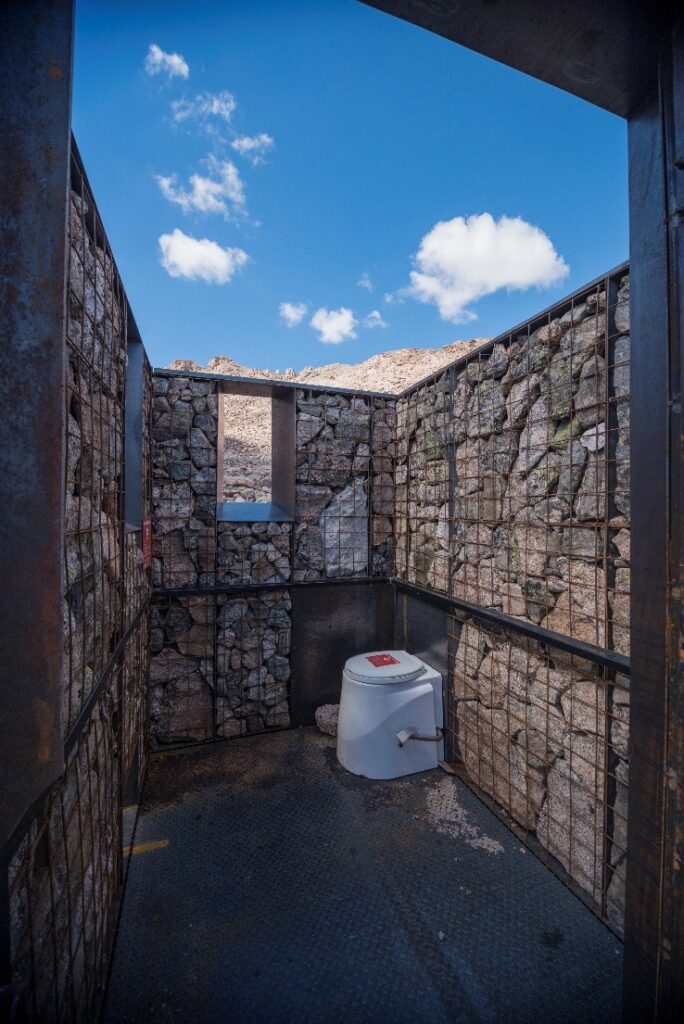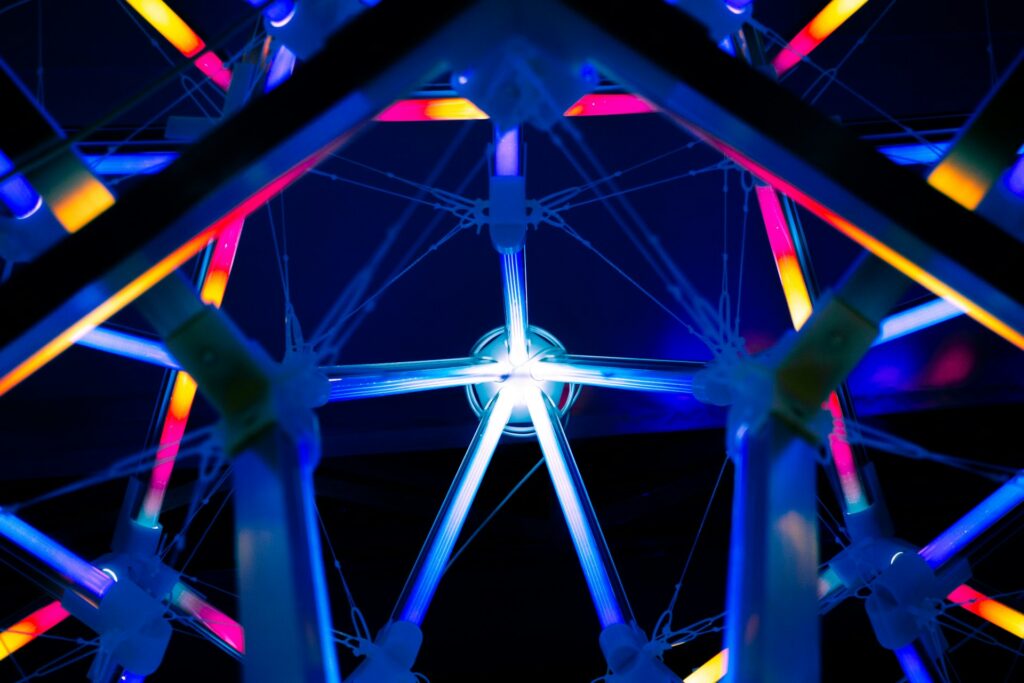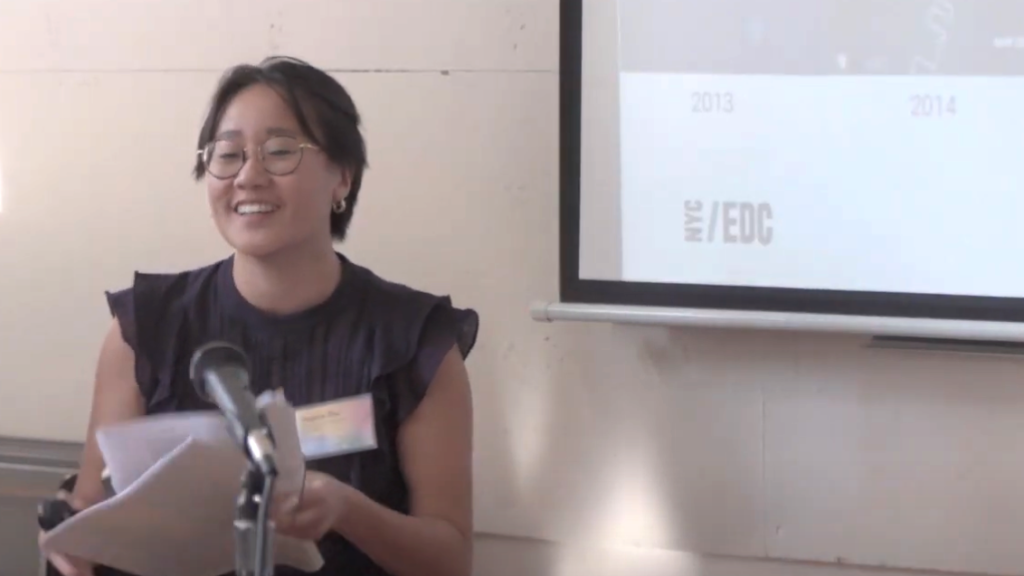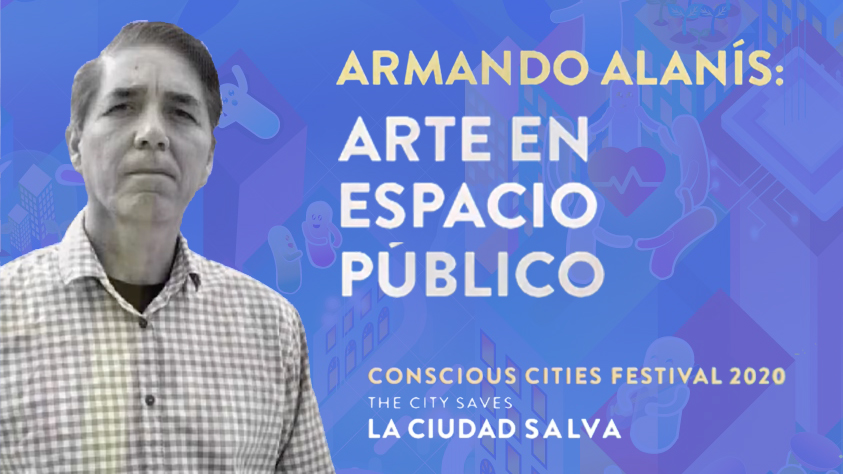Where do we do our best thinking? It is possible that the most often overlooked space in building design is among the most important in supporting cognition.
My husband spends a lot of time in the bathroom. What happens in there is more than just biological– it is neurological. At the beginning of the day, he uses his bathroom ritual to think about what he has scheduled that day, the goals he needs to accomplish, and how he plans to accomplish them. At the end of the day, he retraces his activities of the day, reflecting on them and learning from them. Why does he spend so much time in the bathroom when he has a lovely home office just a few feet away? While it is possible that he is multitasking to save time, or just seeking solitude and privacy as he would suggest, I can’t help but speculate that there is something supporting his planning and learning mechanisms linked with the very act of toileting, and the bathroom space itself. If this is the case, could such cognitive benefits be supported through restroom design using nature-like features to guide neural mechanisms?
Brain mechanisms supporting learning and planning
The brain’s hippocampus is a key structure associated with learning and memory, and also spatial navigation through the environment. Hippocampal neurons called place cells fire in response to a given location’s physical properties, such as wall configurations and doorways, registering each location as “place”1. Sequential patterns of place cell firings represent an animal’s trajectory through space, similar to a GPS tracking device. A phenomenon known as replay occurs when that trajectory– that sequence of firing patterns experienced during recent activity– is repeated in the brain. It is believed that reactivating these patterns strengthens the permanence of cell assemblies2. Thus, replay is likely a mechanism underlying memory consolidation and retention; that is, learning3,4. Moreover, replay has been shown to drive future goal-directed decisions; that is, planning5,6,7 . Place cell-like activity8 and route encoding9 have also been recorded in the hippocampal system’s connected neighbor, the retrosplenial cortex (RSC), a structure which may play a role in memory. It is presumed that such learning and planning mechanisms supported by replay extend to content beyond spatial information, including activity patterns such as sounds10 and visual stimuli11 originating in sensory cortical regions. In those cases, memory consolidation processes occur similarly through replay events coordinated between cortical regions and the hippocampus.
Behaviors linked with learning and planning
Replay can occur in spaces entirely separate from the spatial experience being replayed12; it is not necessary for the animal to remain in the physical location being replayed. Neuroscientists who study memory discovered that replay occurs in rats during sleep13 and during certain wakeful states when an animal is engaged in “consummatory behaviors”. As described by neuroscientist Matt Wilson, consummatory behaviors are those which satisfy internal drives, when the animal isn’t attending to the outside world, and include eating, grooming, copulating, and defecating (personal communication, February 6, 2019). Perhaps because it is more socially acceptable to focus on eating and grooming behaviors, little attention has been given to the rather uncomfortable topic of replay and defecating. However uncomfortable it is to talk about, defecating is an important behavior to consider given its potential implications in supporting beneficial replay activity.
At least for rats, anyway.
While replay has been detected in the rat hippocampus using intracranial electrodes, there is no direct evidence confirming that replay exists in humans14 due to ethical implications of using invasive devices. Inferential evidence from human research correlating spatial and memory tasks with neural activity supports the hypothesis that replay does in fact play a role in goal-directed behavior during rest15. If, like rats, the human brain is also wired to replay, how might we create opportunities which can better support this important process?
For many workers, toileting is the only opportunity for pause which they are permitted during a work day. While wellbeing-oriented employers may offer Zen rooms aimed at supporting respite and recharging workers, many workers feel compelled to make up for such break time at the end of their shift, or simply cannot afford a break from work demands– except, of course, in instances of biological necessity. Thus, toileting plays an important role not only in keeping people physiologically healthy, but also cognitively healthy because of the potential for pause and its associated cognitive benefits such as replay.
For cognitive benefits to occur, the act of toileting must occur in supportive conditions. Both internal and external demands on the brain influence whether replay is facilitated16. Replay is supported by low cognitive load when internal demands are not driving active, goal-directed behaviors. Externally, replay is supported when environmental conditions are such that surrounding sensory stimuli are not demanding attention. In the absence of either supportive condition, it is less likely that firing patterns are reactivated and replayed, cell assemblies stabilized, and therefore less likely for learning and planning to occur.
Environments supporting learning and planning
In her article, “Places of pause: The cognitive impact of wakeful rest”,Miriam Hoffman describes the importance of incorporating liminal spaces — places to pause– in buildings and cities to support spatial pattern replay17. She suggests that something as simple as a bench placed at a decision point in a complex environment encouraging pause may support spatial memory and wayfinding via replay mechanisms. The restroom is by definition an architectural liminal space for pause, and is programmatically linked with a replay-supporting behavior, i.e. the act of toileting. Thus, there is a distinct opportunity to engage spatial and content-based replay mechanisms through the design of the restroom, and hence support learning and planning.
Environmentally, reduced sensory interference which occurs when there is competing, non-congruent sensory information, is key to supporting replay18. It is a quality also beneficial for guiding defocused attention which has been linked to neural mechanisms supporting creativity. According to Insight Theory19, defocused attention guides divergent thinking through spontaneous processing generating “the Aha! Moment” when background interference is absent. And, there is also something about the compressed scale of the restroom space, the greater sense of enclosure relative to other spaces we typically inhabit which is potentially linked with cognitive benefits. Anthropological precedents such as a monk’s cell and library study carrel suggest a relationship between cognitive performance and physical enclosure. An EEG study of healthy adults20 showed an increase in absolute power at electrode sites marking the left and right central cortex when the local environmental scale was reduced by half. In a later behavioral study involving pre-school children21, it was found that children engaged in longer periods of complex play while in a reduced scale environment. Perhaps this sense of enclosure helps limit the amount of sensory stimuli and potential distraction from the immediate environment and thus may support internal processing.
Yet, no design guidelines exist for non-residential restroom design aimed at supporting such cognitive benefits. In public restrooms, the abundance of distractions render it nearly impossible to enter an offline state as one’s attention is constantly consumed by surrounding activity. What then, might be an ideal restroom design to support learning and decision making through replay and other neural processing mechanisms? Eliminating sensory interference is not the same as sensory deprivation, eliminating all sensory information, but ratheris achieved by strategically choregraphing the stimuli to support a singular perceptual understanding of the external environment. According to Attention Restoration Theory, a spectrum of nature-like features ranging from single trees or flowers to verdant vegetation to views of landscapes softly capture involuntary bottom-up attention22. This differs from harsh stimulation such as bright lights and loud sounds which also capture attention automatically, but do so in much more consuming ways. Immersion in nature has also been found to facilitate defocused attention and mind-wandering23. These states are likely supported because the type of congruent sensory information inherent in nature reduces the perceptual load and sensory interference which we experience in our everyday lives. In addition, engagement with tactile stimuli was shown to enhance the stability of place-cell activity in some parts of the rodent brain24 supporting location encoding, an essential building block of spatial replay. If similar neural properties exist in humans and extend to other replay mechanisms, the cross-modal visio-tactile quality of nature would further guide replay during toileting. While nature has been linked with many beneficial health outcomes such as improved attention, cognitive functioning, reduced stress, improved mood, and enhanced immune functioning25, its application to restroom design may also support learning and decision-making by guiding replay through a supportive sensory experience.


If replay is indeed a neural mechanism guiding learning and planning in humans, we would want to optimize replay behaviorally through adequate sleep and intermittent pauses throughout our wakeful day, as well as environmentally by pairing those wakeful pauses with environments conducive to supporting a defocused, internal processing state. The restroom seems to be one key space which lends itself to supporting those behavioral and environmental criteria, and research-informed cognitive design guidelines could be developed to meet this aim as the evidence base grows.
Not sure if I would include such nature-inspired design at our house though, my husband just might never leave the bathroom.
References
- 1 O’Keefe, J., and Dostrovsky, J. (1971). The hippocampus as a spatial map. Preliminary evidence from unit activity in the freely moving rat. Brain Research, 34, 171–175.
- 2 Ólafsdóttir, H. F., Bush, D., Barry, C. (2018). The Role of Hippocampal Replay in Memory and Planning. Current Biology, 28, 1, R37-R50.
- 3 Wilson, M., and McNaughton, B. (1994). Reactivation of hippocampal ensemble memories during sleep. Science 265, 676–679.
- 4 Girardeau, G., Benchenane, K., Wiener, S.I., Buzsaki, G., and Zugaro, M.B. (2009). Selective suppression of hippocampal ripples impairs spatial memory. Nature Neuroscience, 12, 1222–1223.
- 5 Diba, K., and Buzsaki, G. (2007). Forward and reverse hippocampal place-cell sequences during ripples. Nature Neuroscience 10, 1241–1242.
- 6 Karlsson, M., and Frank, L. (2009). Awake replay of remote experiences in the hippocampus. Nature Neuroscience 12, 913–918.
- 7 Pfeiffer, B., and Foster, D. (2013). Hippocampal place-cell sequences depict future paths to remembered goals. Nature 497, 74–79.
- 8 Mao, D., Kandler, S., McNaughton, B., and Bonin, V. (2017). Sparse orthogonal population representation of spatial context in the retrosplenial cortex. Nature Communications, 8, 243.
- 9 Vedder L., Miller A., Harrison M. and Smith D. (2016). Retrosplenial cortical neurons encode navigational cues, trajectories and reward locations during goal directed navigation. Cerebral Cortex 27, 3713–3723.
- 10 Rothschild, G., Eban, E., and Frank, L. (2017). A cortical-hippocampal-cortical loop of information processing during memory consolidation. Nature Neuroscience 20, 2, 251-259.
- 11 Ji, D., and Wilson M. (2007). Coordinated memory replay in the visual cortex and hippocampus during sleep. Nature Neuroscience 10, 100–107.
- 12 Karlsson, M., and Frank, L. (2009). Awake replay of remote experiences in the hippocampus. Nature Neuroscience, 12, 913–918.
- 13 Olmstead, C., Best, P., Mays, L. (1973). Neural activity in the dorsal hippocampus during paradoxical sleep, slow wave sleep and waking. Brain Research, 60, 381–391.
- 14 Ólafsdóttir, H. F., Bush, D., Barry, C. (2018). The Role of Hippocampal Replay in Memory and Planning. Current Biology, 28, 1, R37-R50.
- 15 Ólafsdóttir, H. F., Bush, D., Barry, C. (2018). The Role of Hippocampal Replay in Memory and Planning. Current Biology, 28, 1, R37-R50.
- 16 O’Neill, J., Pleydell-Bouverie, B., Dupret, D., and Csicsvari, J. (2010). Play it again: reactivation of waking experience and memory. Trends in Neurosciences, 33, 220–229.
- 17 Hoffman, M. (2018). Places of pause: The cognitive impact of wakeful rest. Conscious Cities Journal No.5, https://theccd.org/articles/places-pause-cognitive-impact-wakeful-rest
- 18 Ólafsdóttir, H. F., Bush, D., Barry, C. (2018). The Role of Hippocampal Replay in Memory and Planning. Current Biology, 28, 1, R37-R50.
- 19 Kounios, J. & Beeman, M. (2009). The Aha! Moment: The Cognitive Neuroscience of Insight. Current Directions in Psychological Science, 18, 4.
- 20 Delong, A., Lubar, J. (1979). Effect of environmental scale of subjects on spectral EEG output. Society for Neuroscience Abstracts, 5, 203.
- 21 Delong, A., Tegano, D., Moran, J., Brickey, J., Morrow, D., Houser, T. (1994). Effects of spatial scale on cognitive play in preschool children. Early Education & Development, 5, 3, 237-246.
- 22 Kaplan, S., Berman, M. (2010). Directed attention as a common resource for executive functioning and self-regulation. Perspectives in Psychological Science 5, 1, 43-57.
- 23 Atchley, R., Strayer, D., Atchley, P. (2012). Creativity in the Wild: Improving Creative Reasoning through Immersion in Natural Settings. PLoS ONE, 7, 12, e51474.
- 24 Mao, D., Kandler, S., McNaughton, B., and Bonin, V. (2017). Sparse orthogonal population representation of spatial context in the retrosplenial cortex. Nature Communications, 8, 243.
- 25 Kuo, M. (2015). How might contact with nature promote human health? Promising mechanisms and a possible central pathway. Frontiers in Psychology 6, 1093.
- 1 O’Keefe, J., and Dostrovsky, J. (1971). The hippocampus as a spatial map. Preliminary evidence from unit activity in the freely moving rat. Brain Research, 34, 171–175.
- 2 Ólafsdóttir, H. F., Bush, D., Barry, C. (2018). The Role of Hippocampal Replay in Memory and Planning. Current Biology, 28, 1, R37-R50.
- 3 Wilson, M., and McNaughton, B. (1994). Reactivation of hippocampal ensemble memories during sleep. Science 265, 676–679.
- 4 Girardeau, G., Benchenane, K., Wiener, S.I., Buzsaki, G., and Zugaro, M.B. (2009). Selective suppression of hippocampal ripples impairs spatial memory. Nature Neuroscience, 12, 1222–1223.
- 5 Diba, K., and Buzsaki, G. (2007). Forward and reverse hippocampal place-cell sequences during ripples. Nature Neuroscience 10, 1241–1242.
- 6 Karlsson, M., and Frank, L. (2009). Awake replay of remote experiences in the hippocampus. Nature Neuroscience 12, 913–918.
- 7 Pfeiffer, B., and Foster, D. (2013). Hippocampal place-cell sequences depict future paths to remembered goals. Nature 497, 74–79.
- 8 Mao, D., Kandler, S., McNaughton, B., and Bonin, V. (2017). Sparse orthogonal population representation of spatial context in the retrosplenial cortex. Nature Communications, 8, 243.
- 9 Vedder L., Miller A., Harrison M. and Smith D. (2016). Retrosplenial cortical neurons encode navigational cues, trajectories and reward locations during goal directed navigation. Cerebral Cortex 27, 3713–3723.
- 10 Rothschild, G., Eban, E., and Frank, L. (2017). A cortical-hippocampal-cortical loop of information processing during memory consolidation. Nature Neuroscience 20, 2, 251-259.
- 11 Ji, D., and Wilson M. (2007). Coordinated memory replay in the visual cortex and hippocampus during sleep. Nature Neuroscience 10, 100–107.
- 12 Karlsson, M., and Frank, L. (2009). Awake replay of remote experiences in the hippocampus. Nature Neuroscience, 12, 913–918.
- 13 Olmstead, C., Best, P., Mays, L. (1973). Neural activity in the dorsal hippocampus during paradoxical sleep, slow wave sleep and waking. Brain Research, 60, 381–391.
- 14 Ólafsdóttir, H. F., Bush, D., Barry, C. (2018). The Role of Hippocampal Replay in Memory and Planning. Current Biology, 28, 1, R37-R50.
- 15 Ólafsdóttir, H. F., Bush, D., Barry, C. (2018). The Role of Hippocampal Replay in Memory and Planning. Current Biology, 28, 1, R37-R50.
- 16 O’Neill, J., Pleydell-Bouverie, B., Dupret, D., and Csicsvari, J. (2010). Play it again: reactivation of waking experience and memory. Trends in Neurosciences, 33, 220–229.
- 17 Hoffman, M. (2018). Places of pause: The cognitive impact of wakeful rest. Conscious Cities Journal No.5, https://theccd.org/articles/places-pause-cognitive-impact-wakeful-rest
- 18 Ólafsdóttir, H. F., Bush, D., Barry, C. (2018). The Role of Hippocampal Replay in Memory and Planning. Current Biology, 28, 1, R37-R50.
- 19 Kounios, J. & Beeman, M. (2009). The Aha! Moment: The Cognitive Neuroscience of Insight. Current Directions in Psychological Science, 18, 4.
- 20 Delong, A., Lubar, J. (1979). Effect of environmental scale of subjects on spectral EEG output. Society for Neuroscience Abstracts, 5, 203.
- 21 Delong, A., Tegano, D., Moran, J., Brickey, J., Morrow, D., Houser, T. (1994). Effects of spatial scale on cognitive play in preschool children. Early Education & Development, 5, 3, 237-246.
- 22 Kaplan, S., Berman, M. (2010). Directed attention as a common resource for executive functioning and self-regulation. Perspectives in Psychological Science 5, 1, 43-57.
- 23 Atchley, R., Strayer, D., Atchley, P. (2012). Creativity in the Wild: Improving Creative Reasoning through Immersion in Natural Settings. PLoS ONE, 7, 12, e51474.
- 24 Mao, D., Kandler, S., McNaughton, B., and Bonin, V. (2017). Sparse orthogonal population representation of spatial context in the retrosplenial cortex. Nature Communications, 8, 243.
- 25 Kuo, M. (2015). How might contact with nature promote human health? Promising mechanisms and a possible central pathway. Frontiers in Psychology 6, 1093.








